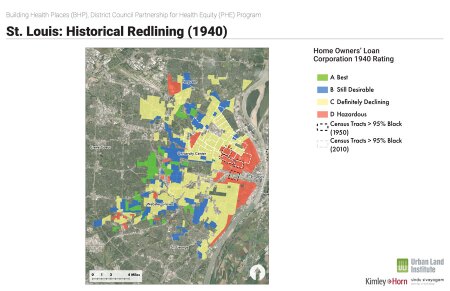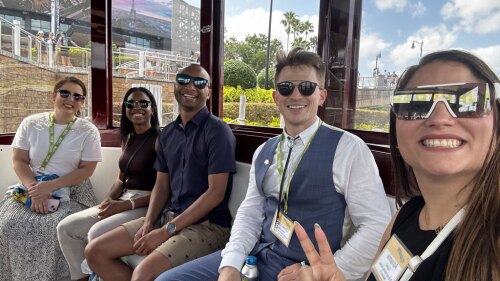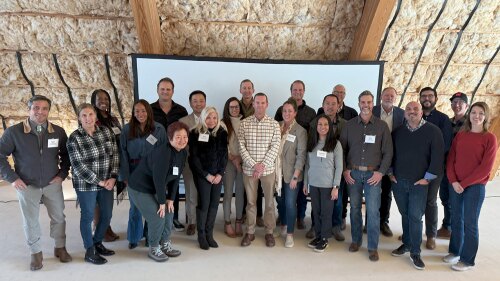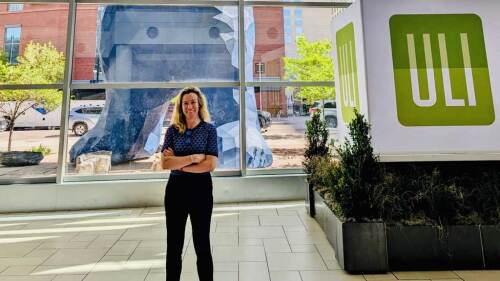Weighing racial disparities in the commercial real estate industry.
The Urban Land Institute’s St. Louis district councilis among a group of five ULI district councils that has been working to examine local histories of racial discrimination in land use and transportation, to draw connections with current health equity disparities, and to chart a course towards a more equitable future for the real estate industry. The project, ULI District Council Partnerships for Health Equity, is supported by the ULI Building Healthy Places Initiative with financial support from the Robert Wood Johnson Foundation.
The cohort of participating district councils includes ULI Houston, ULI St. Louis, ULI British Columbia, ULI Northwest, and ULI Toronto. The project launched last year, following an open call for interest from North American district councils. The district councils are working in partnership with other organizations locally to understand historic inequities and racial discrimination in land use, and to craft creative strategies to address the ongoing impacts of these policies on community health and wealth disparities. These action agendas for change in real estate will emphasize tangible steps for real estate, in addition to broader policy recommendations.
The ULI Building Healthy Places Initiative works to make health and social equity mainstream considerations in real estate practice. According to William Herbig, senior director of the ULI Building Healthy Places Initiative, “The two main factors driving this reckoning within the industry and within ULI include the disproportionate impact of COVID-19 on communities of color and those of low income; and the rise of the racial justice movement as a result of the brutal murder of George Floyd.
“ULI, as an organization, has committed to doing more,” Herbig says. “Our profession has been part of the problem. We have the ability and the responsibility to address racial inequity going forward. But we cannot go at it alone. Finding solutions requires building new bridges of trust and cooperation beyond our network of members.”
That the district council teams are geographically diverse was intentional. And this marks the first time a Building Healthy Places program has been able to fund councils in Canada. “The systemic racial issues are different in the U.S. versus Canada, and there’ve been robust listening and learning opportunities amongst the two Canadian teams and the U.S. teams to better understand nuances involved in Black and Indigenous experiences and differences in the two countries,” Herbig says Each district council has identified chairs and a leadership group for the effort.
The aim of this program is to “address these systemic issues,” Herbig says. To do so, the ULI district councils are reaching beyond their established local networks, forging new relationships, learning about local histories, and working to drive fundamental industry change.
Amplifying the Physical and Mental Aspects of Housing Quality
ULI St. Louis is also reckoning with historical trauma as it aims to provide solutions for the lack of affordable housing citywide. While still early in the process, the team is striving to concentrate on “both the physical and the mental health aspects that seem most likely to be impacted by the quality of housing,” says Kacey Cordes, co-chair of ULI-St. Louis.
That team’s project focuses upon North St. Louis City, an historically Black neighborhood. Black residents lived here because of racially restrictive covenants and redlining. The ULI team aims to create an efficient network that can address home repairs in the area.
“One thing we’ve been talking about is how trauma is [among] our largest or most prevalent public health issues in America today,” says Aaron Williams, a team member, and a senior project manager at Penn Services. “We already know that vacancy is traumatic, and that displacement is traumatic, and one of the better preventative measures for both of those … issues is home repair. It mitigates vacancy, and it reduces displacement.”
The team aims to create an efficient network that can address home repairs in the area and is also connecting housing quality and current health conditions (via research that includes mapping mental health assessments and asthma).
The group aim to build a home repair network in St. Louis; members also hope to help raise awareness of the issue within ULI, according to Chip Crawford, ULI St. Louis co-chair.
In any city, a segment of the population is left out if there is no effective system in place to address deferred home repairs that disproportionately impact people of color, according to Cordes. When such a lapse occurs, people are relegated to having to choose between whether to repair or purchase a new roof, for example, or repair their staircase or replace their furnace, Cordes says, adding that this assumes they have the cash to pay for it and can find a willing contractor.
“If your city doesn’t have a robust home repair system, you can’t say you’re focused on racial equity in neighborhoods,” Cordes says. “You are permitting more trauma to happen, especially impacting children of color growing up in aging homes. Improving the health of our homes will help us succeed as a region.”
This team is not simply focusing upon ULI. It has its collective sights set on the bigger picture.
“The ULI group is important, but ultimately what we’re trying to do is effect positive outcomes in our community much more broadly than just [inside] the real estate industry,” says Kelly Annis, ULI St. Louis staff member.







